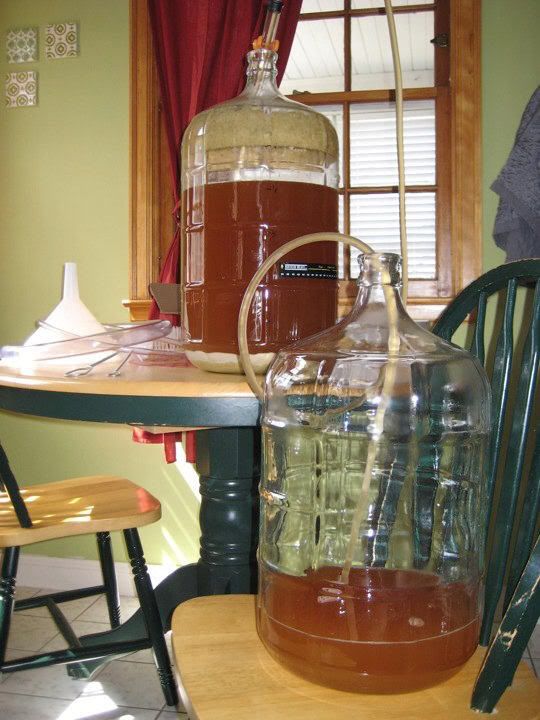After brew day… now what?

Siphoning Snaggletooth IPA from primary to secondary
There is more to brewing beer than brew day. Most of my posts tagged as “batches” should provide a (overly?) detailed synopsis of a brew day. Sure, brew day is the most important day in the entire process where attention to detail is of the utmost importance, but there are two other milestones in the process that get the beer from grain to glass.
Siphoning
Once fermentation slows and the airlock on the carboy is only bubbling every 10 seconds or so (should happen between 5 and 10 days after you pitch the yeast, thought this has always happened closer to 5 for me), it’s time to start thinking about transferring the beer from the primary fermentation vessel to the secondary.The purpose of this transfer is to take the beer off of the dead/dormant yeast cells and proteins, or trub, that have collected at the bottom of the primary fermenter during fermentation. If you leave the beer sitting on the trub for too long (some say more than a month is bad), some off-flavors could be perceived in the finished product as a result.
You can know for sure that the time is right to transfer to secondary by taking gravity readings of your fermenting wort. I do this using a refractometer instead of a hydrometer for three reasons:

About to take refractometer readings for two batches
- Hydrometers are apparently made of very delicate glass. I broke two hydrometers in as many consecutive brew days. Apparently I’m not good at being delicate with things, so I went for a much more sturdy option: the refractometer. Check out the homebrewing resources tab up top left on my blog to find a link that will tell you more about refractometers.
- Refractometers allow the brewer to use about 1/8th the amount of beer to get a reading compared to a hydrometer, so you end up with more finished product.
- When using a refractometer, one would appear to be looking through a small telescope. I like to pretend I am an explorer at sea, looking through my spyglass out into a large body of… beer.
Once siphoned to the secondary fermenter, the beer usually doesn’t do too much more fermenting – though I have experienced a little bit of activity on a few batches if the yeast are roused enough during transfer. Transferring to secondary also helps to clarify the final product by leaving all that sediment behind in primary. Just adding one more opportunity to clarify the beer before it hits the glass. Once in secondary, the beer can stay there for a few weeks (for ales) or a few months (for lagers). Lagers need time to… “lager” at about 35 degrees or so in order to smooth out their flavor profiles and promote further clarity in the brew.
In my next post, I’ll cover what goes into bottling day, the importance of sanitation and the meaning of life.
